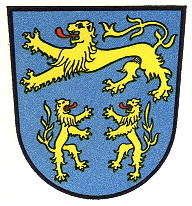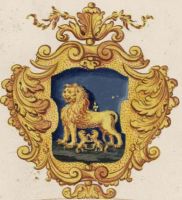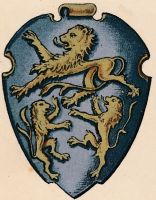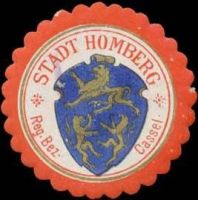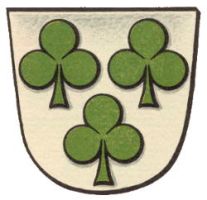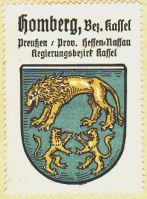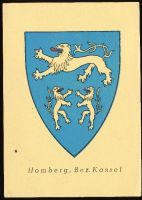Homberg (Efze): Difference between revisions
Knorrepoes (talk | contribs) m (Text replacement - "/Arms of " to "/Arms (crest) of ") |
Knorrepoes (talk | contribs) m (Text replacement - "{{media}}" to " {{de1}} {{media1}}") |
||
| Line 39: | Line 39: | ||
[[Civic Heraldry Literature - Germany|'''Literature''']]: Stadler, 1964-1971, 8 volumes. | [[Civic Heraldry Literature - Germany|'''Literature''']]: Stadler, 1964-1971, 8 volumes. | ||
{{ | |||
{{de1}} | |||
{{media1}} | |||
[[Category:German Municipalities H]] | [[Category:German Municipalities H]] | ||
Revision as of 11:51, 26 December 2022
This page is part of the German heraldry portal |
Heraldry of the World |
|
German heraldry:
|
Selected collector's items from Germany:
|
HOMBERG (EFZE)
State : Hessen
District (Kreis) : Schwalm-Eder Kreis (until 1973 Fritzlar-Homberg (until 1932 Homberg))
Additions : 1971 Allmuthshausen (1968 Rückersfeld), Berge, Caßdorf, Dickershausen, Holzhausen bei Homberg, Hombergshausen, Hülsa, Lembach, Lützelwig, Mörshausen, Mardorf, Mühlhausen, Relbehausen, Rodemann, Roppershain, Sondheim, Steindorf, Waßmuthshausen, Welferode, Wernswig
| German |
Im blauen Schild oben ein schreitender, rotgezungter goldener Löwe, unten zwei kleinere einander zugewandte steigende goldene Löwen. |
| English | (Efze) No blazon/translation known. Please click here to send your (heraldic !) blazon or translation |
Origin/meaning
Homberg received city rights before 1231 and the oldest known seal dates from 1246. The seal shows a lion, but colours are not known. A second seal, known since 1239 but younger in design, shows the striped lion of Hessen.
In the 14th century the lion appears above three small mountains. This was later misinterpreted as a lion above two smaller lions. Until 1639 there were three small lions, ever since there are only two. Ever since the arms are shown as such.
In the early 16th century the city also used a coat of arms not based on the seal. The shield showed three trefoils, but was hardly used after the early 16th century.
The arms in a manuscript from +/- 1730
The arms in an 1884 book
The arms by Hupp in the Kaffee Hag albums +/- 1925
Literature: Stadler, 1964-1971, 8 volumes.


